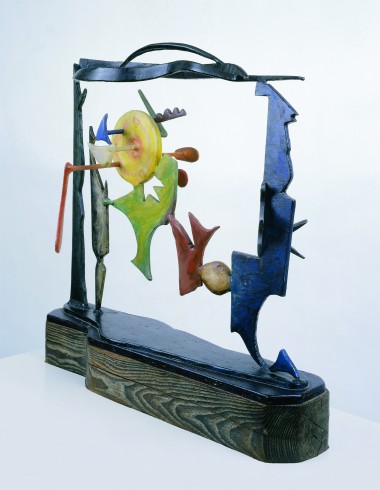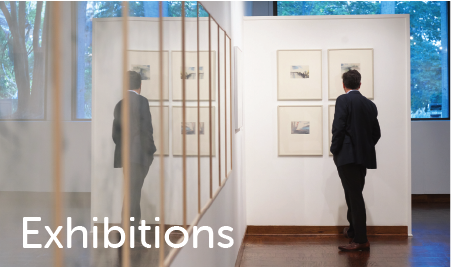Sculpture Collection David Smith Helmholtzian Landscape American, 1906-1965 American artist David Smith was a pioneer of metal sculpture at a time when materials such as steel and iron were mostly used for industrial purposes. Smith declared the significance of metal in his talk “The New Sculpture” at the Museum of Modern Art in New York in 1952: “What associations [metal] possesses are those of this century: power, structure, movement, progress, suspension, destruction, brutality.” Smith made Helmholtzian Landscape in 1946, six years after leaving New York City to move to rural Bolton Landing, NY, and the year after finishing a stint working as an industrial welder at the American Locomotive Company during World War II to support the war effort. Inspired by his surroundings and possessing some new welding skills, Smith created a series of “landscape” sculptures including Helmholtzian Landscape, composed of cut steel pieces welded to form a surreal, linear landscape of hovering shapes. Smith often sketched the mountainous views around him while riding the train between Manhattan and his home, which might have inspired the rough frame of Helmholtzian Landscape, as if mimicking a train window. Measuring around a foot and a half high, Helmholtzian Landscape is rather enchanting in its compact size and painted surface, particularly in contrast to Smith’s later, large-scale works. The colors Smith used might also give some clue to the title, as it seems to reference Hermann von Helmholtz, a 19th century physician and scientist known for his research on color theory and influence on the Impressionist artists. |








